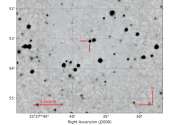OLED Tunes its Colors for Sunlight-Style Illumination
(PhysOrg.com) -- Scientists have developed a lighting device that can change its color temperature throughout the day, matching the natural daylight chromaticities produced by the sun. Currently, no other type of lighting ...









